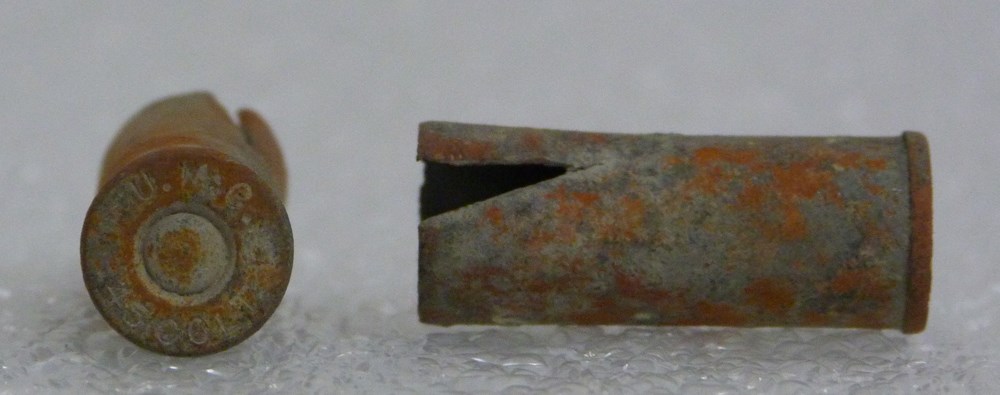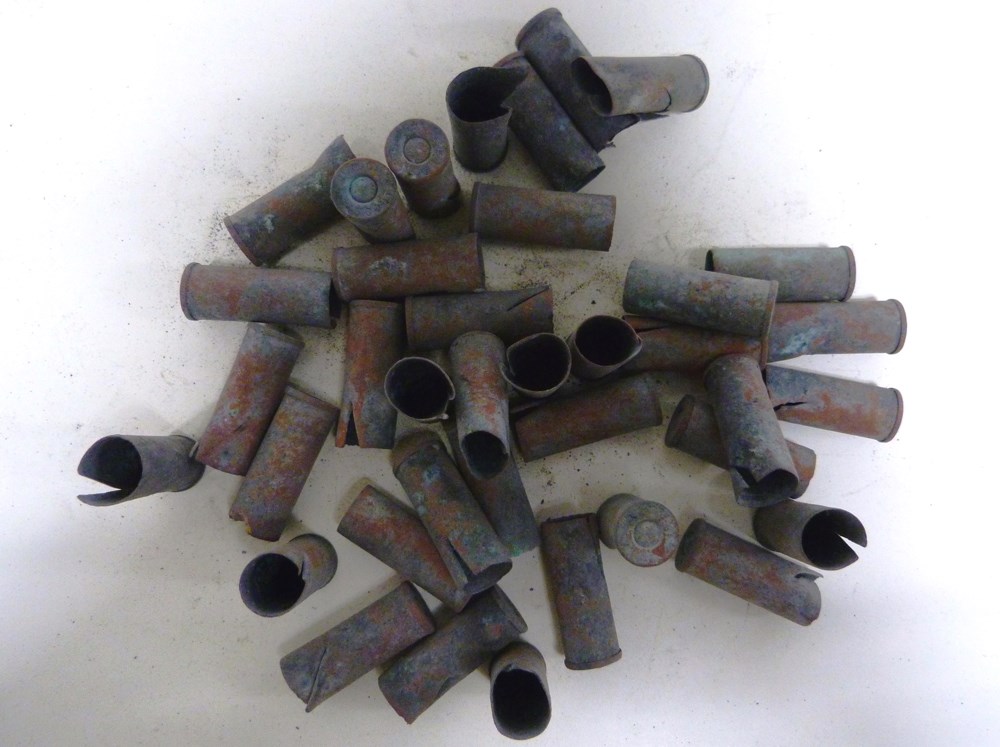
NPS photo. Artifact: KLGO 47882 According to archeologist Charles Adkins "[a] cut in the case, in the area that formally held the bullet, is rare but not unknown in Alaska. This cut is used to unload the case and salvage the powder and lead." While this might be an answer, it raises another question. Why were the soldiers salvaging the powder and lead?
Idea 1: A sign of racial discrimination, the black soldiers of Company L were intentionally sent the wrong supplies. Some of this ammunition dated to 1895. Company L was in Skagway from 1899-1902 and likely started using this location in 1901. Why were they using old ammunition? Cooper and Spude 2011 suggested that this may have been a form of discrimination. At Fort Walla Walla, Washington, African American troops routinely received less equipment and lower quality equipment4. If this was the case in Skagway, Company L may have been making do with what they had been given.
Idea 2: Resourceful soldiers sliced open the casing to extract the bullet and powder to repurpose. Slicing open the casing allowed soldiers to save the unused gun powder and bullets. Cooper 2004 suggested this was so they could then have used these to hunt local game and supplement their diet. Some animal bones that were not professionally butchered were found near the sliced cartridges. A park visitor suggested soldiers may have been using the gunpowder to start fires more easily in stoves in their rooms. The presence of newer .30 ammunition at this site may tell us that the older .45 ammunition was being replaced and discarded making it available to other uses.
Idea 3: Soldiers may have been required to save gunpowder and bullets to use for practice shots. Soldiers were required to save fired cartridges to use for practice shooting1. Perhaps saving the gunpowder and bullets was also required for practice ammunition. These cartridges were found in a small shack on 2nd Avenue, most likely a coal shed2. Maybe this pile is the result of someone working at the shed.
Idea 4: You tell us! Do you have another idea why these cartridges were sliced? If so, please contact us. We are looking for insight or information related to this artifact. 
NPS photo. Artifact: KLGO 47882 References used for this page1. Adkins, Charles. 2004. Appendix B: Skagway Cartridge Analysis. Gold Rush Life in Skagway: The Second Avenue "Cabins." |
Last updated: November 30, 2016
